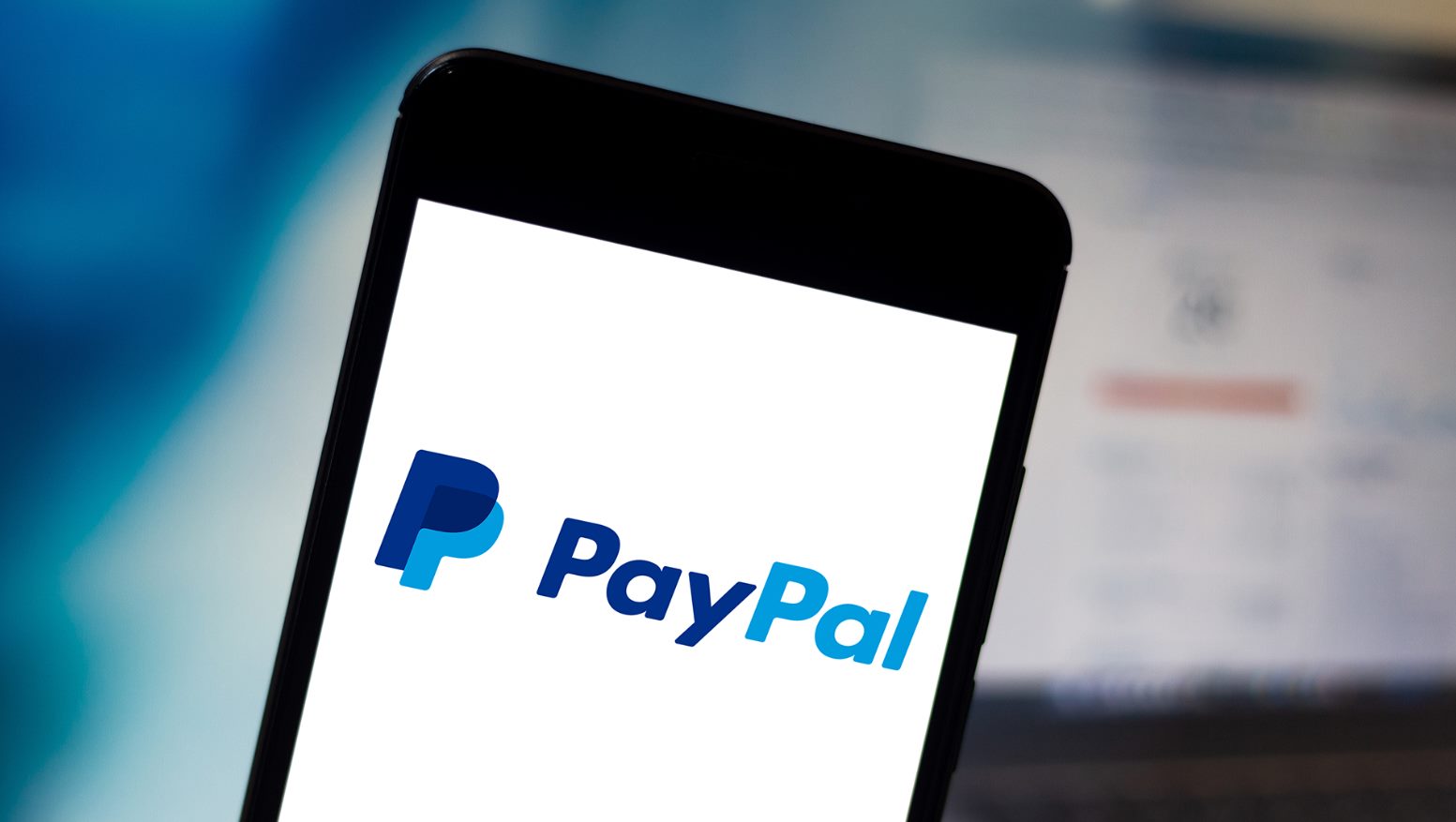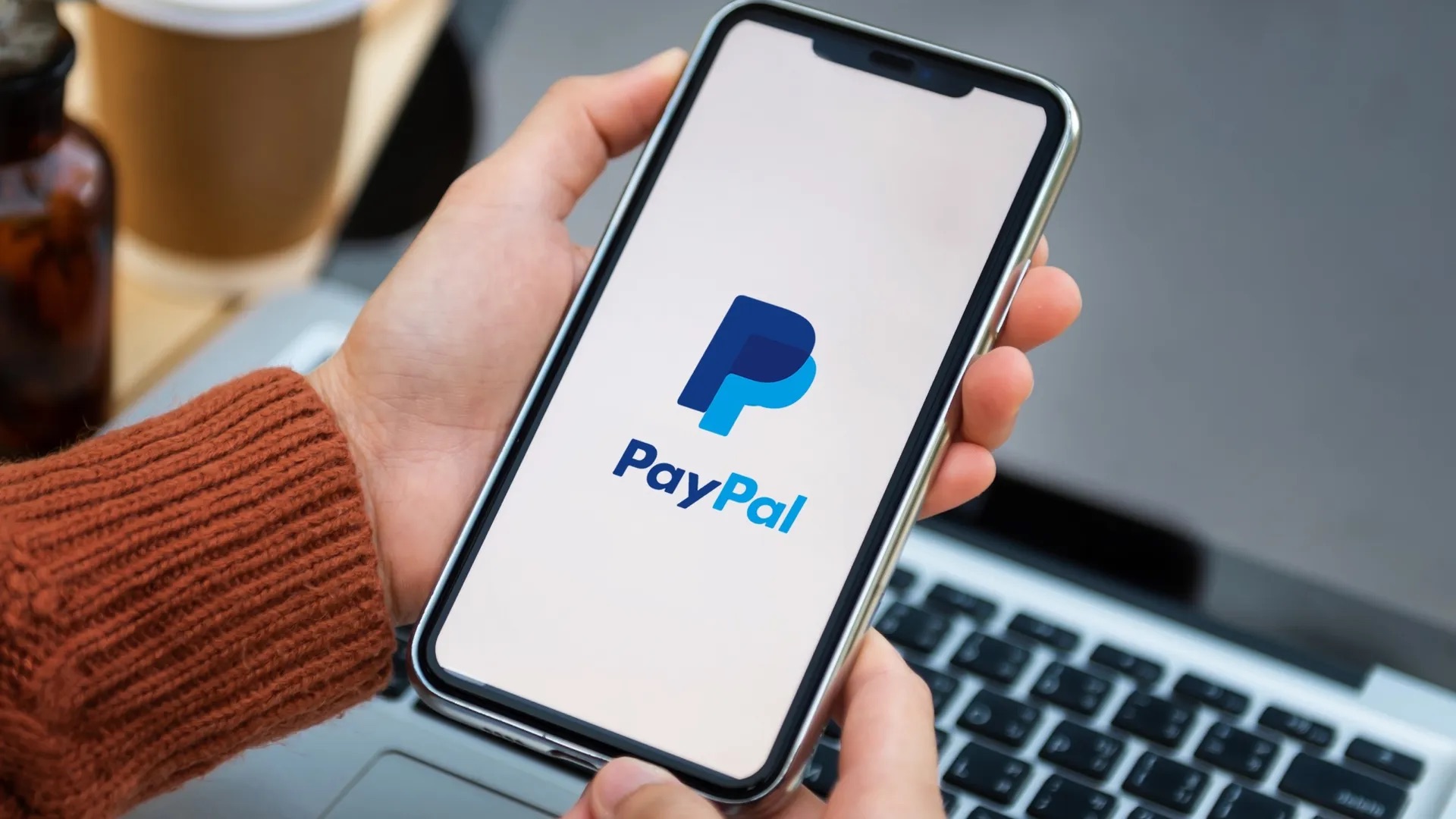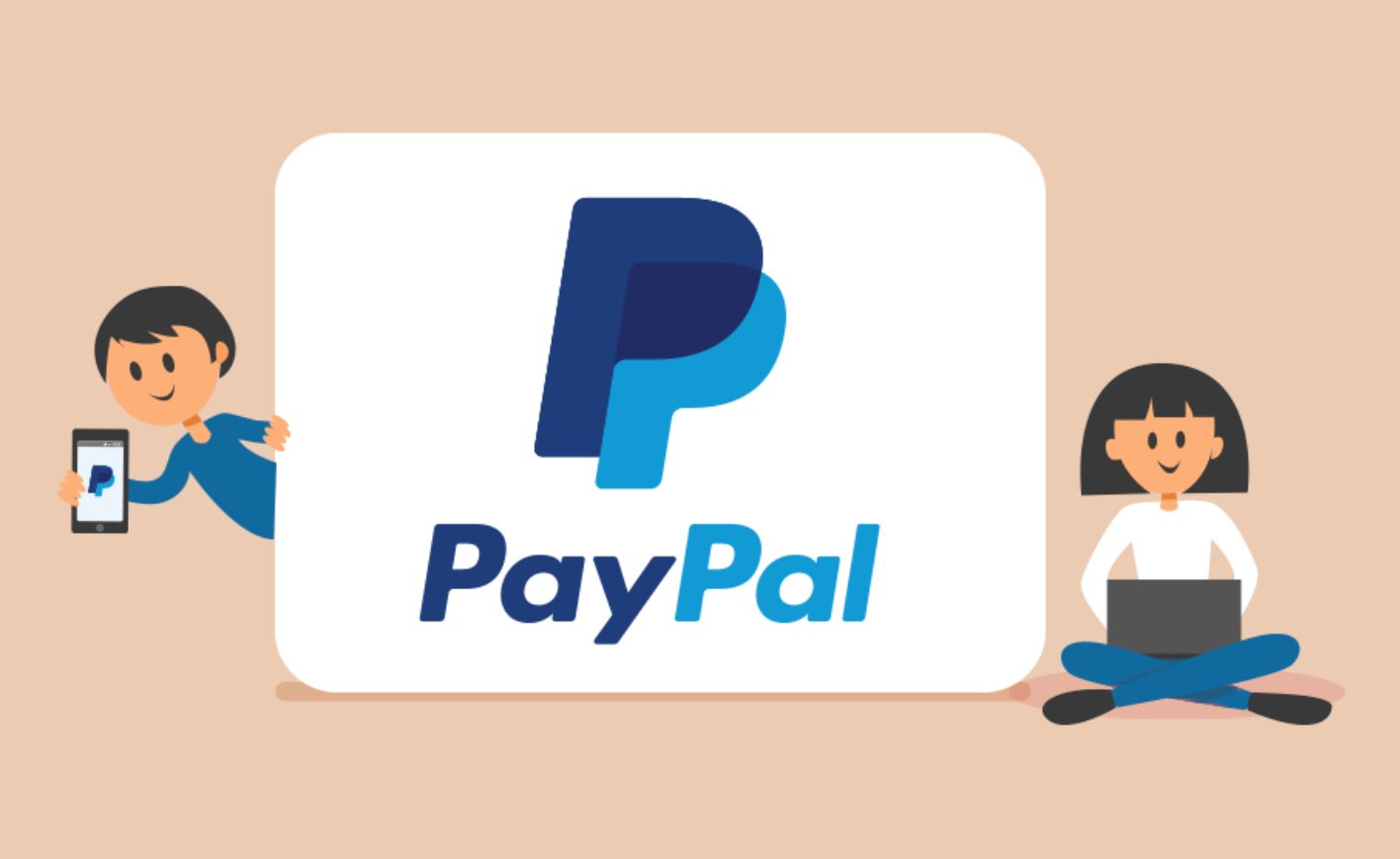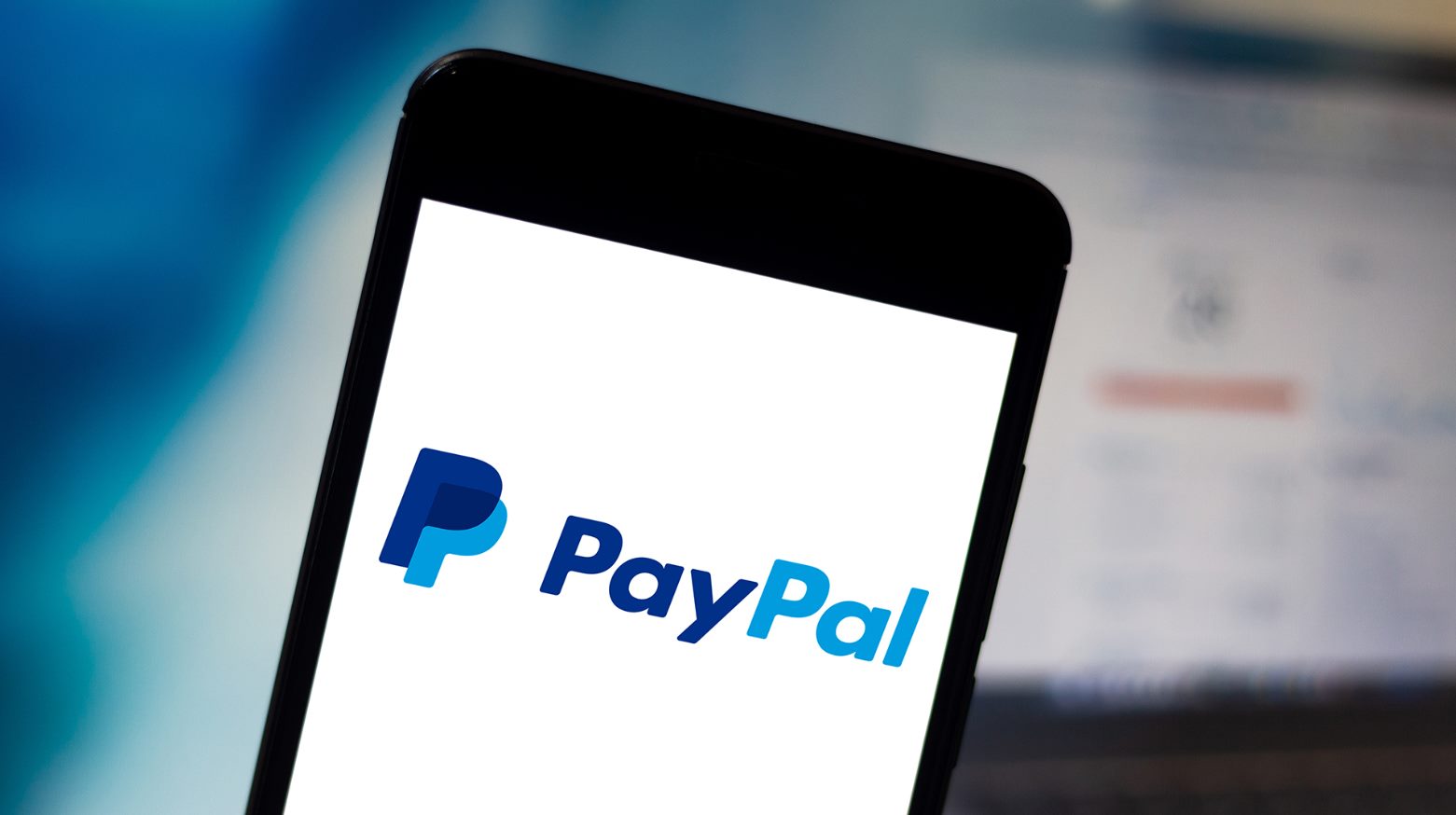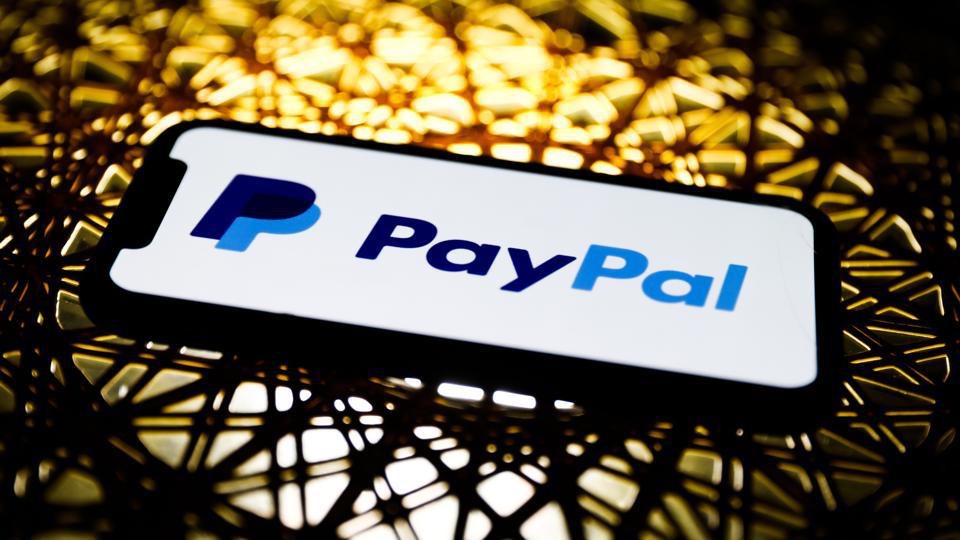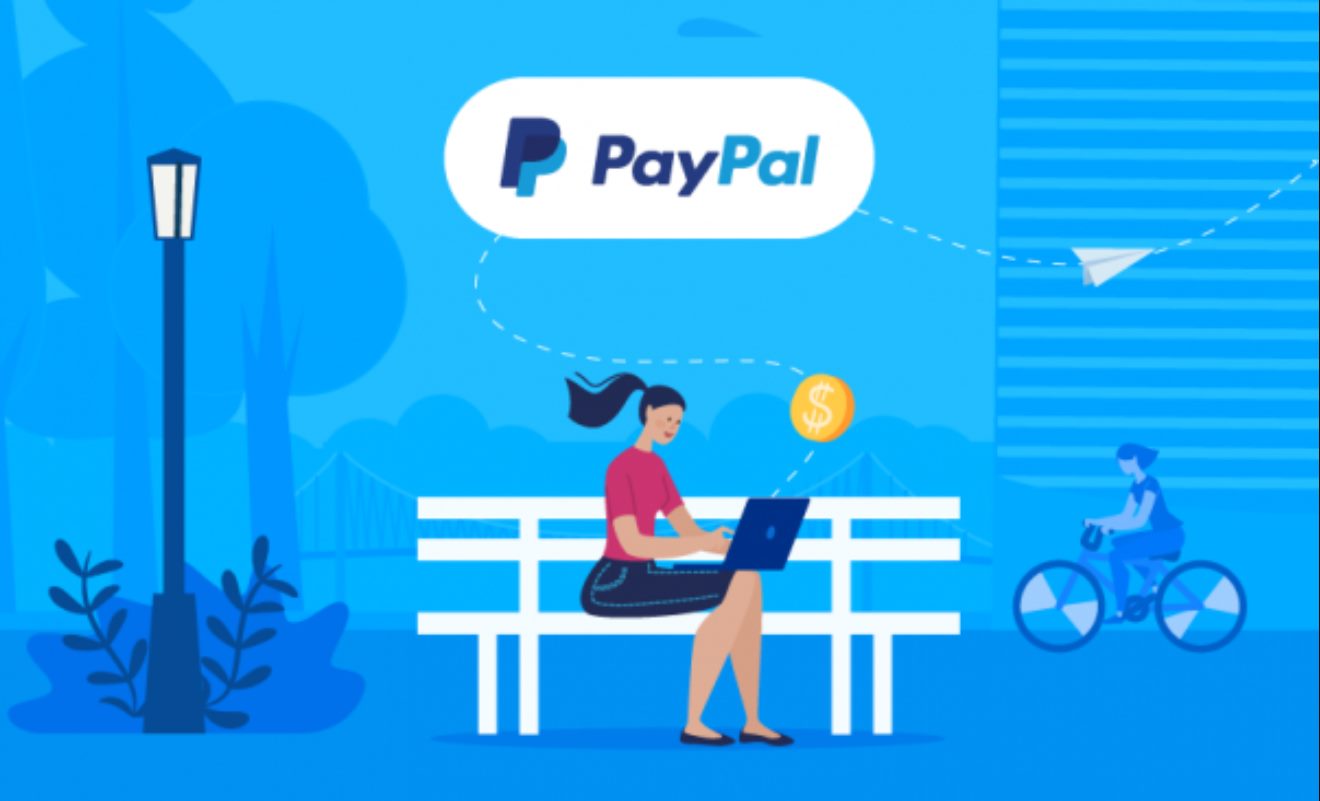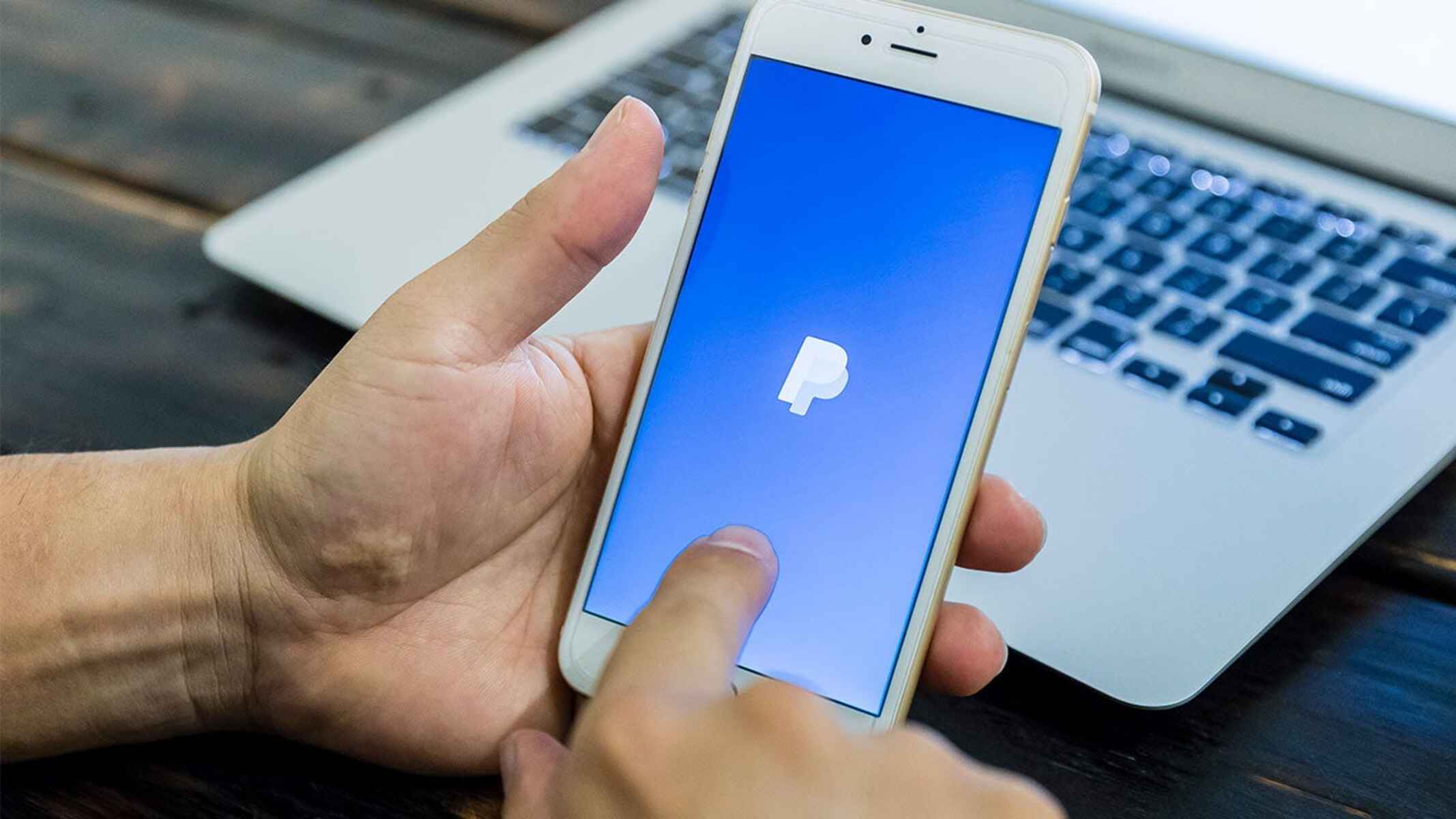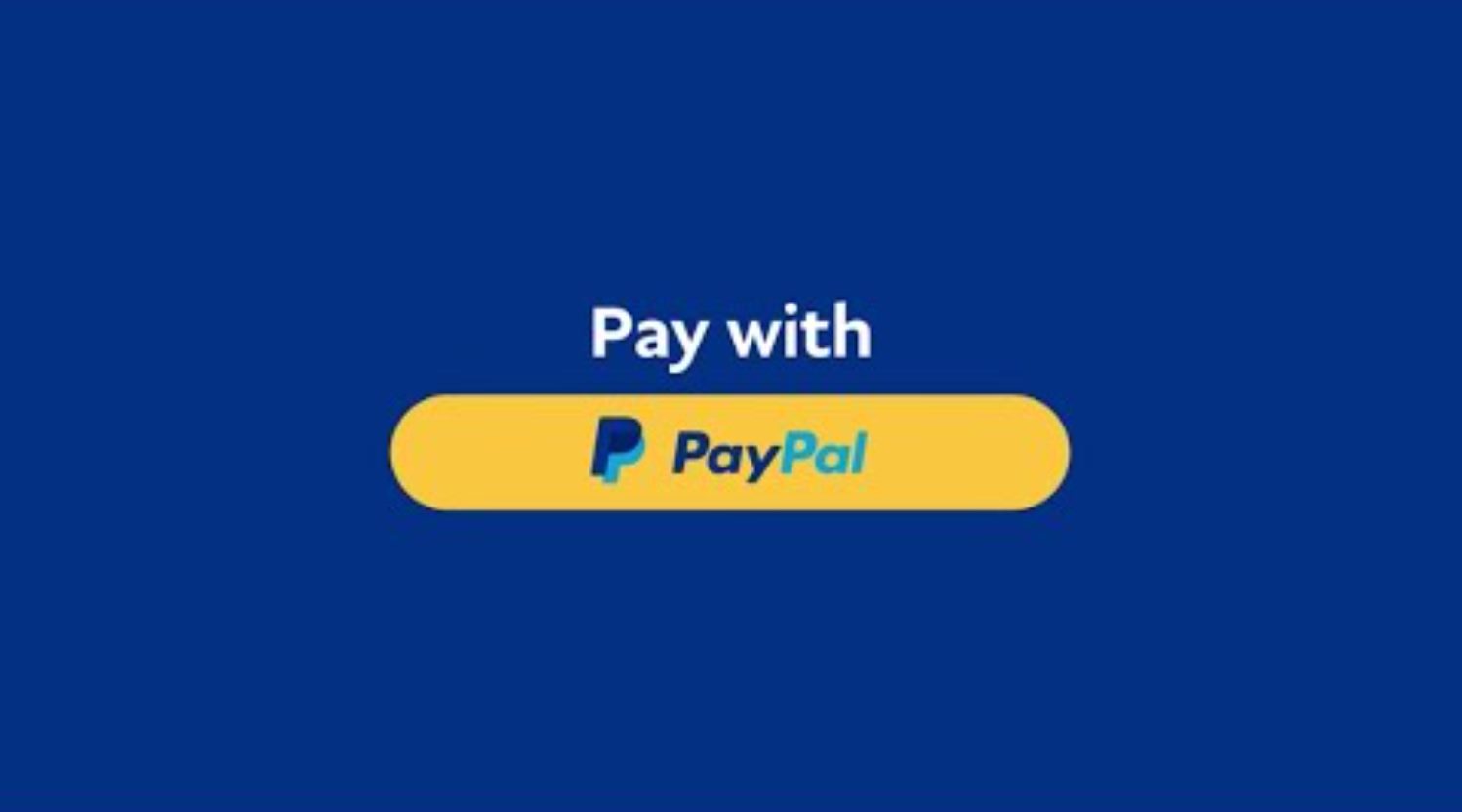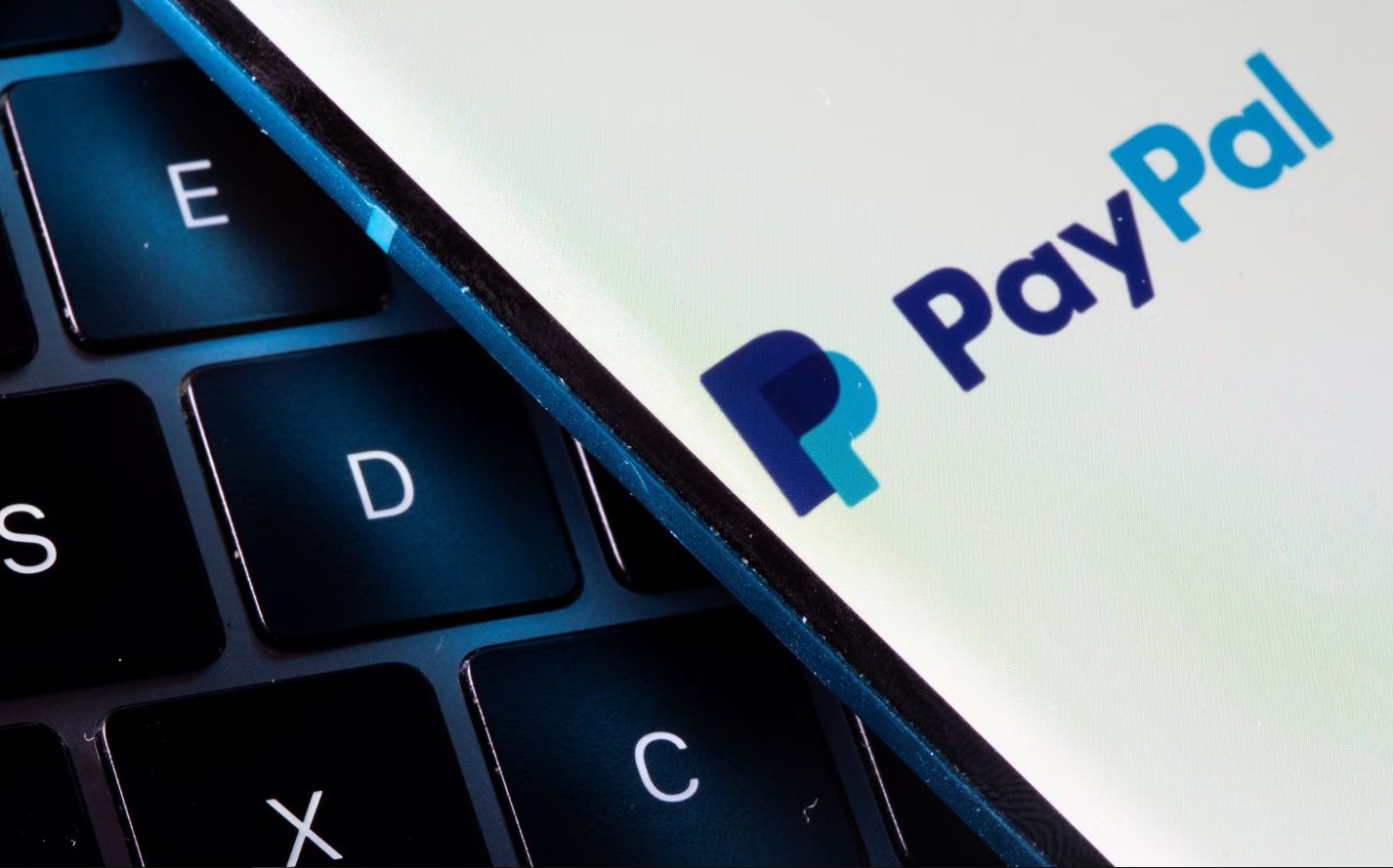Introduction
Welcome to the world of convenient and secure online transactions! PayPal, a global leader in digital payments, offers a simple and efficient way to send money to your friends and family. Whether it’s reimbursing a colleague for lunch or helping out a loved one in need, PayPal provides a hassle-free payment solution that ensures peace of mind.
In this guide, we will walk you through the process of sending money to your friends and family using PayPal. We will cover everything from setting up your PayPal account to understanding the fees and charges involved. So, let’s dive in and explore how you can easily and securely transfer money to your loved ones!
Before we get started, it’s important to note that PayPal offers two types of transfers: personal payments and payments for goods and services. In this guide, we will focus on sending money to friends and family, which falls under the personal payment category.
With PayPal’s user-friendly interface, sending money has never been easier. You can enjoy the convenience of making transactions from the comfort of your own home, without the need for cash or checks. Plus, with PayPal’s robust security measures, you can rest assured that your financial information is protected at all times.
In the next section, we will guide you through the process of setting up a PayPal account, verifying it, and linking it to your bank account or credit card. These steps are crucial for a smooth and seamless transfer experience.
So, let’s get started on this exciting journey of hassle-free money transfers with PayPal!
Setting up a PayPal Account
Before you can send money to your friends and family on PayPal, you’ll need to set up an account. It’s a simple and straightforward process that only takes a few minutes. Here’s how you can get started:
1. Visit the PayPal homepage: Open your web browser and go to www.paypal.com. Click on the “Sign Up” button to begin the registration process.
2. Choose your account type: PayPal offers two types of accounts – Personal and Business. For sending money to friends and family, select the Personal Account option.
3. Provide your information: Fill in the required information, including your email address, password, and personal details. Make sure to use a secure password that includes a mix of uppercase and lowercase letters, numbers, and symbols.
4. Agree to the terms and conditions: Read through PayPal’s terms and conditions and privacy policy. If you agree to them, check the box to confirm your acceptance.
5. Verify your email address: PayPal will send a verification email to the address you provided during registration. Open the email and click on the verification link to confirm your email address.
6. Create security questions and answers: To further secure your account, choose and answer two security questions. These will be used to verify your identity if you ever need to reset your password or access your account.
7. Link your bank account or credit card: To add funds to your PayPal account or withdraw money, you’ll need to link a bank account or credit card. Follow the prompts to add your financial information securely. PayPal uses encryption technology to protect your sensitive data.
8. Confirm your identity: As an extra precaution, PayPal may require you to confirm your identity. This can be done by providing additional information such as your social security number or uploading a photo ID.
Once you have completed these steps, your PayPal account will be set up and ready to use. You can now send money to your friends and family without any hassle. In the next section, we will discuss how to verify your PayPal account, which is necessary for certain transaction limits and added security.
Verifying your PayPal Account
Verifying your PayPal account is an important step to ensure the security and credibility of your transactions. It also unlocks additional features and benefits that may be restricted for unverified accounts. Here’s how you can verify your PayPal account:
1. Confirm your email address: As mentioned earlier, PayPal will send a verification email to the address you provided during the account setup process. Open the email and click on the verification link to confirm your email address. This step is necessary to complete the verification process.
2. Link and confirm your bank account: Adding and confirming a bank account is a crucial part of verifying your PayPal account. To do this, navigate to the “Wallet” section of your PayPal account and click on “Link a bank account.” Follow the instructions to provide your bank account details. PayPal will deposit a small amount into your bank account, which you’ll need to confirm within a few days to verify the account. Once confirmed, the funds will be returned to your PayPal account.
3. Provide your social security number (SSN) or tax identification number (TIN): Depending on your country of residence, PayPal may require you to provide your SSN or TIN to verify your identity. This step is essential for complying with regulatory requirements and preventing fraud. Rest assured that PayPal keeps your personal information secure and confidential.
4. Confirm your address: Verifying your address adds an extra layer of security to your PayPal account. PayPal may ask you to confirm your address by uploading a document that shows your name and address, such as a utility bill or bank statement. This document should be current and must match the address you provided during the registration process.
Once you have completed these verification steps, your PayPal account will be fully verified, and you’ll have access to all the features and benefits that come with it. Verified accounts enjoy higher transaction limits, enhanced security protocols, and a trusted reputation within the PayPal community.
It’s important to note that the verification process may vary depending on your location and the specific requirements of PayPal. If you encounter any issues or need further assistance, PayPal’s customer support team is available to guide you through the verification process.
Now that your PayPal account is verified, you’re ready to link your bank account or credit card to make seamless money transfers. In the next section, we’ll discuss how to link and manage your financial information on PayPal.
Linking your Bank Account or Credit Card
In order to send money to your friends and family on PayPal, you’ll need to link your bank account or credit card to your PayPal account. This allows you to add funds to your PayPal balance or withdraw money as needed. Here’s how you can link your bank account or credit card:
1. Log in to your PayPal account: Go to www.paypal.com and enter your email address and password to access your account.
2. Access your Wallet: Once you’re logged in, navigate to the “Wallet” section of your PayPal account. Here, you’ll be able to view and manage all your linked financial information.
3. Link your bank account: Click on “Link a bank account” and enter your bank account details, including the account number and routing number. PayPal may also require you to enter the name of your bank. Once you’ve entered the required information, click on “Link Bank” to initiate the verification process.
4. Confirm your bank account: To verify your bank account, PayPal will make two small deposits (usually less than $1) into your bank account. It may take a couple of business days for these deposits to reflect in your bank account. Once you see the deposits, log back into your PayPal account and navigate to the “Wallet” section. Click on the bank account you added and follow the instructions to enter the amounts of the deposits. This confirms that you are the account holder and allows PayPal to link and verify your bank account.
5. Link your credit card: If you prefer to use a credit card for your PayPal transactions, you can link it by clicking on “Link a card” in the Wallet section. Enter your credit card details, including the card number, expiration date, and security code. Once you’ve provided the necessary information, click on “Link Card” to add it to your PayPal account.
6. Confirm your credit card: To ensure the security of your account, PayPal may require you to confirm your credit card. This can be done by reviewing your credit card statement for a unique code or transaction and entering it on the PayPal website. Alternatively, PayPal may make a small authorization charge on your credit card, which you’ll have to verify in order to confirm it.
By linking your bank account or credit card to your PayPal account, you’ll have the flexibility to add funds to your PayPal balance, make payments directly from your linked bank account, or use your credit card for transactions. PayPal takes the necessary security measures to protect your financial information and ensures that your transactions are processed safely.
In the next section, we’ll discuss the fees and charges associated with sending money on PayPal, so that you can make informed decisions while managing your transactions.
Understanding the Fees and Charges
When using PayPal to send money to friends and family, it’s important to understand the fees and charges involved. While sending money domestically within the same country is usually free, there may be fees associated with certain transactions or international transfers. Here’s an overview of the fees and charges you should be aware of:
1. Sending money domestically: In most cases, sending money to friends and family domestically through PayPal is free. However, if you’re using a credit card or PayPal Credit to fund the transaction, a nominal fee may apply. It’s always a good idea to check PayPal’s fee structure for the most up-to-date information.
2. Receiving money: If you’re receiving money from friends and family, there are generally no fees involved. The sender may choose to cover any fees associated with the transfer, ensuring that you receive the full amount without any deductions.
3. Currency conversion: If you’re sending money internationally or making a transaction in a different currency, PayPal charges a currency conversion fee. This fee is based on the exchange rate and can vary depending on the specific transaction. PayPal provides transparent information about the applicable conversion rates and fees before finalizing the transaction.
4. Reversal or refund fees: In certain cases, if you need to reverse a transaction or refund a payment, PayPal may charge a fee. These fees are typically deducted from the refunded amount or the amount being reversed. It’s important to review PayPal’s policy on reversals and refunds to understand the potential fees involved.
5. Other miscellaneous fees: PayPal may charge additional fees for services such as expedited transfers, requesting paper statements, or certain account-based services. These fees are outlined in PayPal’s fee structure and are typically optional or related to specific requests or requirements.
It’s important to note that PayPal’s fee structure may vary depending on your country of residence and the specific transaction. It’s always a good idea to review PayPal’s current fee schedule or contact their customer support for any clarifications regarding fees and charges.
As a responsible user, it’s essential to actively monitor and manage your transactions to stay informed about any potential fees. PayPal provides detailed transaction history and statements, allowing you to easily track your expenses and keep a record of your financial activities.
Now that you have a good understanding of the fees and charges associated with using PayPal to send money to friends and family, let’s move on to the step-by-step guide on how to send money on PayPal in the next section.
Sending Money to Friends and Family
When it comes to sending money to friends and family, PayPal offers a quick and secure platform to facilitate seamless transactions. Whether it’s splitting a bill, paying back a loan, or sending a gift, PayPal makes it easy to transfer funds to your loved ones. Here are some important things to know about sending money on PayPal:
1. Personal Payments: Sending money to friends and family falls under the category of personal payments on PayPal. This type of payment is typically free within the same country, making it an affordable option for transferring funds among trusted individuals.
2. Trusted Network: PayPal provides a secure environment for sending money. You can rest assured that your transactions are protected by advanced encryption technology and robust security measures, ensuring that your financial information remains confidential. Additionally, PayPal offers Buyer and Seller Protection programs for eligible transactions, providing an extra layer of security and peace of mind.
3. Instant Transfers: With PayPal, you can send money instantly to your friends and family, allowing them to access the funds in their PayPal account immediately. This ensures that the recipient can use the money as needed without any delays.
4. Multiple Payment Options: PayPal offers various payment methods to suit your preferences and convenience. You can choose to fund your payment using your PayPal balance, linked bank account, or credit card. PayPal also supports payments in multiple currencies, making it easy to send money internationally.
5. Sending Money Abroad: If you’re sending money to friends and family in another country, PayPal allows you to easily transfer funds in different currencies. However, keep in mind that currency conversion fees may apply, as discussed in the previous section. It’s important to review the exchange rates and fees before initiating the transfer.
6. Communication and Messaging: PayPal offers a convenient messaging platform that allows you to communicate directly with the recipient. This is especially useful for coordinating details or providing additional instructions related to the payment.
7. Privacy and Confidentiality: One of the key advantages of using PayPal for personal payments is the privacy it offers. You can send money without revealing your bank account or credit card details to the recipient. This adds an extra layer of security and helps maintain your financial privacy.
Now that you have a good understanding of the basics of sending money to friends and family on PayPal, let’s move on to the step-by-step guide that will walk you through the process of sending money in the next section.
Step-by-step Guide to Sending Money on PayPal
Sending money to friends and family on PayPal is a straightforward process that can be completed in just a few simple steps. Follow this step-by-step guide to ensure a seamless and hassle-free money transfer:
Step 1: Log in to your PayPal account. Visit the PayPal website and enter your email address and password to access your account.
Step 2: Navigate to the “Send & Request” tab. Once you’re logged in, you’ll see a series of tabs at the top of the page. Click on “Send & Request” to proceed.
Step 3: Choose the “Send Money” option. Under the “Send & Request” tab, click on the “Send Money” option to initiate a payment.
Step 4: Select the recipient. Enter the email address or mobile number of the person you want to send money to. If the recipient is already in your PayPal contacts, you can simply select their name from the list.
Step 5: Enter the amount. Specify the amount of money you wish to send to the recipient. You can choose the currency if you’re sending money internationally. PayPal provides real-time exchange rates for your convenience.
Step 6: Select the payment method. Choose how you want to fund the payment. You can use your PayPal balance, linked bank account, or credit card. PayPal will display the available options based on your account settings and preferences.
Step 7: Add a note (optional). If you’d like to include a note or any special instructions for the recipient, you can add it in the “Add a note” section. This can be helpful for providing context or specifying the purpose of the payment.
Step 8: Review and confirm the transaction. Before finalizing the payment, make sure to review all the details, including the recipient and the amount. If everything looks correct, click on the “Send Money” button to confirm the transaction.
Step 9: Get confirmation. After completing the payment, PayPal will provide you with a confirmation message. This will include the details of the transaction, such as the payment amount, recipient, and date. You can also view the transaction history in your PayPal account for future reference.
Congratulations! You’ve successfully sent money to your friend or family member using PayPal. The recipient will receive a notification of the payment, and the funds will be available in their PayPal account.
It’s important to note that PayPal may impose certain transaction limits or security measures for new or unverified accounts. It’s recommended to verify your account and familiarize yourself with PayPal’s policies to ensure a smooth transaction process.
In case you encounter any issues or have questions about the payment, PayPal’s customer support is readily available to assist you. They can provide guidance and resolve any concerns you may have.
Now that you’re familiar with the step-by-step process of sending money on PayPal, let’s move on to the next section, where we’ll discuss choosing the payment method in more detail.
Choosing the Payment Method
When sending money on PayPal, you have the flexibility to choose from multiple payment methods to fund your transaction. This allows you to use your preferred method and manage your finances effectively. Here’s a closer look at the different payment methods available on PayPal:
1. PayPal Balance: If you have funds available in your PayPal balance, you can choose to use this as the payment method. The advantage of using your PayPal balance is that the transaction is completed instantly, without the need for any additional authorization or verification.
2. Bank Account: Linking your bank account to your PayPal account allows you to directly transfer funds from your bank account to complete the transaction. By selecting your linked bank account as the payment method, PayPal will initiate a secure transfer of the specified amount. This is a convenient option for those who prefer not to use their credit cards or want to keep their PayPal balance separate.
3. Credit Card: If you prefer to use your credit card for the transaction, PayPal accepts major credit cards such as Visa, Mastercard, American Express, and Discover. Selecting your credit card as the payment method allows you to enjoy the benefits and rewards offered by your card issuer. Keep in mind that some credit card companies may consider PayPal transactions as cash advances, which could incur additional fees or interest charges. It’s important to review the terms and conditions of your credit card to understand any potential implications.
4. Debit Card: PayPal also accepts debit cards, which can be used as a payment method for sending money. Similar to credit cards, debit cards provide convenience and immediate transfer of funds. PayPal accepts both Visa and Mastercard debit cards, making it accessible to a wide range of users.
5. PayPal Credit: If you have PayPal Credit as a funding source, this can be selected as the payment method. PayPal Credit offers a line of credit that allows you to make purchases or send money with flexible repayment options. It’s important to manage your PayPal Credit account responsibly and review the terms and conditions associated with it.
When choosing the payment method on PayPal, it’s essential to consider factors such as availability, convenience, security, and any associated fees or restrictions. By selecting the most suitable method for your transaction, you can ensure a smooth and satisfactory experience.
It’s worth noting that PayPal allows you to link multiple payment methods to your account. This gives you the flexibility to choose the appropriate method for each transaction based on your needs and preferences.
By selecting the right payment method, you can complete your money transfer smoothly and securely. In the next section, we’ll discuss entering the recipient’s information and specifying the transaction details.
Entering Recipient’s Information
When sending money on PayPal, it’s crucial to enter the recipient’s information accurately to ensure that the funds reach the intended person. Here’s what you need to know about entering recipient’s information on PayPal:
1. Email Address or Mobile Number: To send money, you’ll need to know the recipient’s email address or mobile number associated with their PayPal account. Double-check the information to avoid any errors that could result in the money being sent to the wrong person.
2. PayPal Contacts: If you frequently send money to the same people, it can be helpful to add them as PayPal contacts. This allows you to select the recipient from your contacts, eliminating the need to manually enter their information every time. To add a contact, go to your PayPal account, access “Send & Request,” and select “Add Contacts.”
3. Communication: PayPal provides a messaging platform that allows you to communicate directly with the recipient. This can be particularly useful to clarify the purpose of the payment, provide additional instructions, or address any questions or concerns. Utilize this feature to ensure effective communication between you and the recipient.
4. Verify Recipient’s Information: Before finalizing the transaction, carefully review the recipient’s information to ensure its accuracy. It’s always a good practice to verify the recipient’s email address or mobile number with them directly to ensure that you’re sending money to the correct person.
5. Multiple Recipients: PayPal allows you to send money to multiple recipients in a single transaction. This can be convenient for occasions such as group gifting or splitting expenses among several people. Simply enter the email addresses or mobile numbers of the recipients, along with the allocated amounts for each person.
6. Add a Note: If you want to provide additional information or specify the purpose of the payment, you can include a note in the designated field. This note is optional but can be helpful for the recipient to understand the context of the transaction or any specific instructions associated with it.
Remember, accuracy and attention to detail when entering the recipient’s information are crucial to ensure that the funds reach the intended person in a secure and timely manner. Always double-check the details before confirming the transaction.
In the next section, we’ll discuss the final steps of confirming the transaction and troubleshoot common issues that may arise during the sending process.
Confirming the Transaction
After entering the recipient’s information and specifying the transaction details, the final step in sending money on PayPal is to review and confirm the transaction. Confirming the transaction ensures that all the information is accurate and allows you to proceed with the payment confidently. Here’s what you need to know about confirming the transaction on PayPal:
1. Review the Transaction Details: Before finalizing the transaction, take a moment to review all the details carefully. Check the recipient’s information, including their email address or mobile number, to ensure that you’re sending money to the correct person. Verify the transaction amount to confirm that it matches your intention.
2. Double-Check Payment Method: Confirm that you have selected the desired payment method for the transaction. Whether you’re using your PayPal balance, linked bank account, or credit card, ensure that the correct funding source is chosen. This step is crucial to avoid any unintentional charges to the wrong account.
3. Add Any Additional Notes: If you want to provide any extra information or special instructions to the recipient, this is the time to add them. Use the designated field to include a note that helps clarify the purpose of the payment or any specific details related to the transaction.
4. Review the Fees: If there are any applicable fees or charges for the transaction, review them. PayPal is transparent about its fee structure, so verify that you’re aware of any costs associated with sending the money. Understanding the fees ensures that you make informed decisions when managing your finances.
5. Click on “Send Money” or “Confirm”: Once you’ve reviewed all the transaction details and are satisfied with the information provided, click on the “Send Money” or “Confirm” button to proceed. This action confirms your intention to send the specified amount to the designated recipient.
6. Confirmation Message: After completing the transaction, PayPal will provide you with a confirmation message. This message serves as proof of the completed transaction and includes the details of the payment, such as the transaction ID, date, and recipient’s information. It’s a good practice to save this confirmation for future reference or record-keeping purposes.
Confirming the transaction on PayPal is an essential step to ensure that the funds are sent as intended. By carefully reviewing all the details and verifying the accuracy of the information, you can have peace of mind knowing that your payment is processed correctly and securely.
In the next section, we’ll address common issues that may arise during the sending process and provide troubleshooting solutions to help you overcome them.
Troubleshooting Common Issues
While sending money on PayPal is typically a smooth and straightforward process, there may be instances where you encounter common issues. Here are some troubleshooting tips to help you overcome these challenges:
1. Invalid Email Address or Mobile Number: If you receive an error message indicating that the recipient’s email address or mobile number is invalid, double-check the information entered. Ensure that there are no typos or missing characters. If the issue persists, reach out to the recipient and confirm the correct contact details.
2. Payment Failure: If your payment fails, check if you have sufficient funds in your PayPal balance or the linked payment method. Insufficient funds or a declined credit card can cause payment failures. If necessary, add funds to your PayPal balance or use an alternate payment method to complete the transaction.
3. Account Limitations: In some cases, PayPal may place limitations on your account, such as transaction limits or restrictions based on security concerns. If you encounter any limitations, contact PayPal’s customer support for assistance. They can guide you through the steps to resolve the issue and regain full access to your account.
4. Resolving Disputes: If there is a dispute or disagreement with the recipient regarding the payment, initiate communication through PayPal’s messaging system. Attempt to reach a resolution or understanding directly with the recipient. If the issue cannot be resolved amicably, PayPal’s Resolution Center can help mediate and resolve the conflict.
5. Security and Fraud Concerns: If you suspect any unauthorized activity or fraudulent transactions on your PayPal account, report it immediately to PayPal’s customer support. They have dedicated teams to handle security-related concerns and can assist you in securing your account and resolving any potential issues.
6. Technical Glitches: If you experience any technical glitches or errors while using PayPal, try refreshing the web page or clearing your browser cache. If the problem persists, try accessing PayPal from a different browser or device. If the issue still persists, contact PayPal’s customer support for further assistance.
Remember, should you encounter any issues or need further assistance, PayPal’s customer support team is available to help. They have knowledgeable representatives who can guide you through troubleshooting steps and provide solutions tailored to your specific situation.
By being aware of these common issues and knowing how to troubleshoot them, you can navigate through any challenges that may arise while sending money on PayPal. In the next section, we’ll provide some useful tips on using PayPal for sending money to friends and family.
Tips for Using PayPal for Sending Money to Friends and Family
When it comes to using PayPal for sending money to friends and family, here are some valuable tips to enhance your experience and make the most out of this convenient payment platform:
1. Verify Your Account: Verify your PayPal account to unlock additional features, higher transaction limits, and added security. This process involves confirming your email address, linking and confirming your bank account or credit card, and providing any necessary identification documents.
2. Keep Your Account Information Secure: Protect your PayPal account by using strong, unique passwords and enabling two-factor authentication. Be cautious about phishing attempts and only log in to your account through PayPal’s official website or mobile app.
3. Communicate with the Recipient: Utilize PayPal’s messaging platform to communicate directly with the recipient. Clarify the purpose of the payment, provide any necessary instructions or details, and address any concerns or questions that may arise during the transaction process.
4. Monitor Your Account: Regularly check your PayPal account for any unauthorized transactions or suspicious activity. Review your transaction history, set up notifications for account activity, and report any concerns or discrepancies to PayPal’s customer support immediately.
5. Currency Conversion: If you’re sending money internationally, consider the currency conversion rates and fees associated with the transaction. PayPal provides real-time exchange rates and transparent fees to ensure you’re aware of any costs involved. Compare rates to make informed decisions and optimize your money transfers.
6. Save Transaction Confirmations: Keep a record of transaction confirmations for future reference. This includes the transaction ID, date, recipient details, and payment amount. Saving these confirmations can serve as proof of payment and aid in reconciling any discrepancies or disputes that may arise.
7. Review PayPal’s Policies: Familiarize yourself with PayPal’s policies, including its User Agreement, Privacy Policy, and Seller Protection guidelines. Understanding these policies helps you navigate the platform effectively and ensures that you’re aware of your rights and responsibilities as a PayPal user.
8. Utilize PayPal’s Other Features: Explore other features offered by PayPal that can enhance your experience. This includes requesting money from friends and family, creating money pools for group contributions, and utilizing PayPal’s mobile app for on-the-go convenience.
9. Keep Your Contact Information Up to Date: Maintain accurate and up-to-date contact information associated with your PayPal account. This ensures smooth communication with recipients and allows PayPal to reach you regarding any account-related updates, security concerns, or important notifications.
10. Stay Informed: As PayPal continuously improves and updates its services, stay informed about any changes, new features, or security enhancements. Regularly check PayPal’s website, app, or official communication channels to remain updated on the latest developments.
By implementing these tips, you can make the most out of your PayPal experience and ensure secure and efficient money transfers to your friends and family.
With these guidelines, you’re now equipped to send money to your loved ones confidently using PayPal. Whether it’s a small gift, repayment, or any other financial support, PayPal offers a reliable and user-friendly platform to facilitate seamless transactions.
Conclusion
PayPal provides a convenient, secure, and hassle-free way to send money to your friends and family. By following the step-by-step guide and utilizing the tips provided, you can confidently navigate the PayPal platform and make seamless transactions.
From setting up your PayPal account to verifying it, linking your bank account or credit card, understanding the fees and charges, and sending money to your loved ones, each step is designed to ensure a smooth and reliable experience.
Remember to double-check the recipient’s information, choose the appropriate payment method, and confirm the transaction details to guarantee the accuracy of your payment. Troubleshoot common issues using the tips provided and reach out to PayPal’s customer support whenever needed.
By taking advantage of PayPal’s features such as messaging, secure communication with recipients becomes easier. Keep your account information secure, monitor your transactions, and stay informed about PayPal’s policies and updates.
With PayPal as your trusted intermediary, you can send money safely and conveniently, whether it’s for small personal transactions or larger financial support. The flexibility of payment methods, instant transfers, and the ability to send money internationally make PayPal a versatile choice for individuals worldwide.
So, open your PayPal account, set up the necessary verification steps, and start sending money to your friends and family with confidence. Enjoy the benefits of secure and reliable money transfers, all from the comfort of your own home.
Take advantage of the convenience, security, and user-friendly features that PayPal offers. Say goodbye to the hassle of cash or checks, and experience the ease of online transactions with PayPal.
Start using PayPal for sending money to your friends and family today and enjoy the convenience and peace of mind that comes with it!







